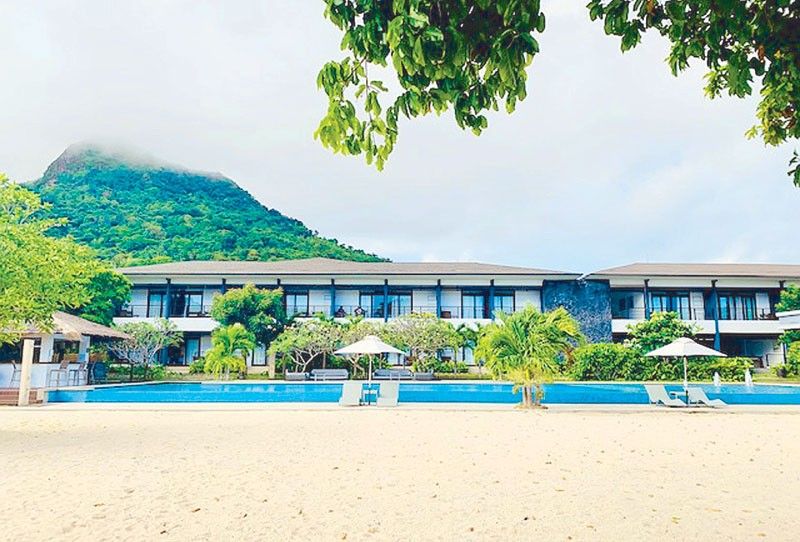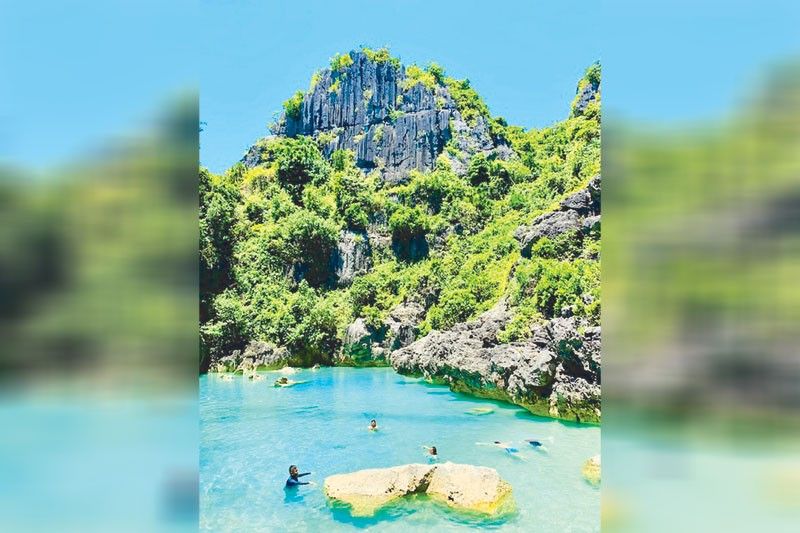Sicogon is hot again: Here's the best way to travel there


Many of us have heard of Sicogon, maybe because it was the island paradise before Boracay was discovered, with a high-end resort that attracted travelers in the ’70s and ’80s.
But that was back in the day, the resort fell into disrepair, and other destinations have been discovered and popularized since then.
Today, turns out this island in northern Iloilo is every bit as beautiful as other, more hyped Philippine destinations — maybe even more so because it’s still pristine and unspoiled. There are no hawkers badgering you on the beach, no para-sailors blocking the sunset, no bar music obscuring the birdsong and gentle susurration of the sea breezes. And there are no hordes of tourists… yet.
Ayala Land is developing the 1,100-hectare island as an ecotourism destination, in partnership with the Sicogon Development Corporation.
“The entire island is 1,100 hectares, 800 of which are developable, and 280 of which is protected forest area,” notes Rita “Ritz” Cristobal, business development and marketing manager at Ayala Land Hotels and Resorts.
Sicogon is such a hidden jewel that Francinne San Juan, founder of the e-commerce and website marketing community Resonate, saw its potential early on and knew she had to promote it on her social travel app, Turista.ph.


“I’ve been doing this since 2007,” she explains. “I was an ex-hotelier turned travel technology, so I learned about it, fell in love because it was helping a lot of Philippine hotels. So when I left the industry, I tried building my own system, using the best practices and dropping the bad ones. I want to change the industry, and I’m not afraid.”
She went from zero to 15 hotels, to 300 and now 3,000 partners and growing. “Then during the pandemic I became the challenger. I was the last tech — lintek — standing,” San Juan laughs.
In Sicogon she partnered with Ayala Land and its three properties: Huni Sicogon, Balay Kogon and Hatch Hostel.
“We found out that they were starting this social super app — that’s when we started talking to Francinne,” says Ritz. “The benefit of partnering is that the value chain is complete, because Air Swift is within the Ayala Group, the resorts are managed by Ayala Resorts. And then the sustainability aspect, which they’re introducing now in the app, is also something that’s very inherent to our brands, as part of the Ayala Land DNA of responsible development. So it all makes sense now that we’re part of the Turista platform. We’re just starting to create awareness for the island as a whole, so it will really help us promote the place if we partner with Turista.”
San Juan set up Turista.ph for Filipinos who love to travel, and the local hotels and resorts eager to receive them. “The Philippines deserves it, definitely,” she says. “The world’s number-one social-media capital is the Philippines; the best 7,100 islands is the Philippines.”
But Turista.ph is not just a booking app offering great deals on rooms, though they certainly have that. You can set up your own profile, follow other Turistas, and there’s a strong community aspect that’s very Filipino. “I want to invent a Community Circle so that you can hire bangkeros and masahistas through the app — local people,” Francinne says.
And, to celebrate Sicogon’s first-ever Environmental Week, Turista.ph is offering a “One Booking = One Tree” promo for Huni Sicogon resort: for every booking you make through the app, they will plant a tree in your name, while you get a P700 discount.
“Our goal is 100 trees,” San Juan says. “It’s an opportunity to be socially responsible, give back and offset our carbon footprint.”
How to get there
At present, Ayala’s boutique carrier Air Swift offers two direct flights between Manila and Sicogon: MNL-ICO 5:55 a.m. Fridays, with the return trip ICO-MNL 8 a.m. Mondays. Flight time is about an hour and 10 minutes, and it’s a three-minute ride from the airport to Huni Sicogon.
There are also commercial flights to Roxas and Iloilo cities, though you need to travel by land then by boat to get to the island, with additional travel time of 1.5 to 2.5 hours.
Where to stay
For families: Huni Sicogon, a two-story resort with 52 beautifully appointed rooms (baby cots are available), sprawls over a stunning location between Mt. Opao and the sea. The long stretch of beach is dotted with trees like a Banilad romantic enough for wedding proposals to take place.
My bed with four pillows was so comfy I was loath to leave it, and they have a daybed as well. There’s Wi-Fi and a TV with Cignal cable. Bathrooms have a showerhead and bidet spray. All rooms have sliding doors that open onto a balcony overlooking a view. Mine was a garden courtyard (others overlook the beach), and there are metal stands where you can hang your wet things.
Huni has an all-day dining outlet facing the beach and 50-meter infinity pool. The food is good, in particular the seafood, the local specialties, and desserts like mais con hielo and halo-halo.
Next to the pool is a bar where happy hour is from 4-6 p.m. Ordering buy-one, take-one frozen margaritas while relaxing in the heated pool became a favorite daily activity.
Huni general manager Jomi de Guzman says the most expensive aspect of running the resort is genset power, so he’s in the process of setting up a solar farm and promises Huni will be solar-powered by December 2023 or January 2024.
They also plan to build cottages for day-trippers who can just walk in and enjoy the facilities without a booking.
For couples and honeymooners: Balay Kogon is a romantic, Robinson Crusoe-like resort with 26 cottage- and tree-house-type accommodations overlooking beach, forest and sea. While rooms normally go for P6,500-P7,500 a night, Balay Kogon is offering an introductory, all-in package of P18,000 that includes the flights, food (at the resort restaurant), and a three-day, three-night stay. (Travel is allowed till the end of this year.)
For barkadas and backpackers: Hatch Hostel charges by the bed, with bunk beds available for larger groups, starting at P1,250. Each room has its own private bath.

What to do
If lounging by the beach, swimming in the pool, and availing of happy hour isn’t enough for you, try these activities:
Go island hopping at Islas de Gigantes. Taking its name from the giant sets of bones found in Bakwitan Cave, this island group is about an hour away by motorized banca (outrigger boat) from Huni resort. Take Bonamine if you’re prone to motion sickness, but the trip is well worth it. Out of 10 islands we visited three: Gigantes Sur has Tangke, a saltwater lagoon you can swim in surrounded by towering limestone cliffs; Cabugao has a 360-degree viewpoint from which to view the isles and sea, plus very Instagrammable garlands and stone sculptures; and you must lunch at Antonia’s (accent on the “I”), an island named after the mother of the owner. Now is the season for scallops, and they cost P1 per piece. Our group feasted on a basket that cost P400, lightly blanched with vinegar as sawsawan, and I’m not exaggerating when I say these are the best scallops I’ve ever eaten. Sitting at a communal table under a talisay tree, digging my toes into the sand and watching the blue waves lap the shore didn’t hurt, either.
You can take these scallops home as pasalubong in the form of garlic and spicy chicharon.
Take a nature hike at the lagoon. This lovely spot that Ayala has paved over for easy walking is a birdwatcher’s dream. “We found 21 species of birds in only three days of assessment with the Philippine Biodiversity Conservation Foundation, and that was just in the lagoon,” says Nica Flores, sustainability officer of Sicogon Island and Resorts. “We saw a tabon nest, Philippine ducks, which are vulnerable, and little grebes.”
Also crucial is the Visayan warty pig, which is critically endangered. “We haven’t found them yet but we have tracks,” Flores says.
The lagoon is also where San Juan held her “Tureesta” tree planting, bringing in the first 10 non-native trees like narra, molave, and barok to enrich the landscape. I chose to plant a talisay after having that memorable lunch under one at Antonia’s. I hope to visit Sicogon again soon to see how it’s growing.
Trek up Mt. Opao. This is a very doable climb, even for non-mountaineers. San Juan did it with her family, and it takes about two to three hours, depending on your pace. Sweeping views of the whole island await those who summit.
* * *
Download the Turista.ph app for the best deals on Sicogon.



















